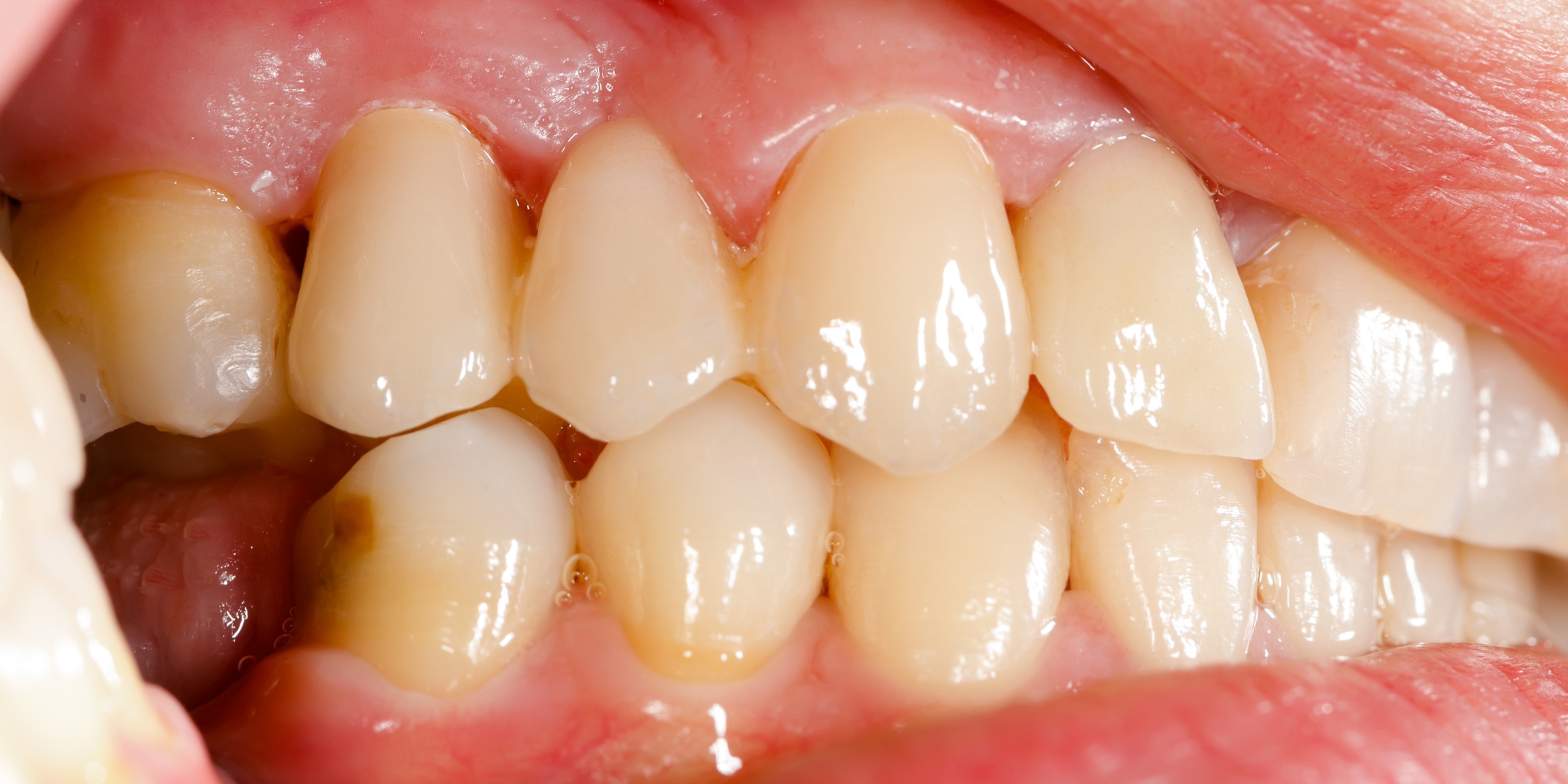- Crown lengthening is an surgical procedure that removes a portion of the gums and sometimes the supporting bone.
- It takes at least three months for gums to heal fully after surgery.
- Crown lengthening may be covered by dental insurance in certain cases.
Crown lengthening is a dental surgical procedure that exposes more of the tooth’s surface.
Below, we answer commonly asked questions about crown lengthening, including what the procedure involves, recovery time, and potential risks.
What is the purpose of crown lengthening?
According to the American Academy of Periodontology, crown lengthening serves two purposes: to improve the appearance of the teeth or to prepare teeth for further dental or periodontal work.
On the cosmetic side, crown lengthening can help correct a “gummy smile.” This occurs when the teeth are the correct length, but they’re covered by too much gum tissue, making them appear too short.
Crown lengthening removes the extra gum tissue to expose more of the tooth and create a more proportionate gumline.
Crown lengthening may also be the first step in another restorative or cosmetic procedure. At least two millimeters of healthy tooth surface are required above the gumline to bond with a crown or filling, thus preventing food or debris from becoming trapped.
However, a tooth may not protrude far enough to support a crown or filling if it has broken off or has decayed below the gumline. If this is the case, the dentist will remove some of the gum tissue (and if needed, bone) to expose enough of the tooth to support the crown or filling.
“Crown lengthening can also be used when periodontal disease is advancing because hard to clean ‘pockets’ have formed in the gumline,” explains Dr. Robert Stanley, a dentist practicing in Cary, NC.
What is involved in crown lengthening?
After being referred by your regular dentist, you will visit a prosthodontist, periodontist or dental surgeon to review your medical history and X-rays, and then schedule a date for the surgery. (Your regular dentist will forward your records before your appointment or you will bring them with you).
You may need to have your teeth professionally cleaned before the surgery to remove any plaque or debris that may have built up around the gumline.
If you’re getting the surgery prior to the placement of a permanent crown, the periodontist may also fit you with a temporary crown, which will be removed during the actual surgery.
The surgical procedure
Surgery will be performed using a local anesthetic, so you can remain awake and alert without feeling any pain.
The dentist will remove minute portions of your gums using surgical blades, lasers or electrosurgery (high-frequency electric current that heats and cut tissue). If necessary, they will also remove some bone from around the roots of the teeth.
Once the surgery is complete, your doctor will wash the area with a sterile saline wash. If bone was removed, stitches will be placed in the gums. Some periodontists may also bandage the affected area. If you have any temporary crowns, they will be replaced at the end of the surgery.
The procedure generally takes about an hour, though this depends on the number of teeth that need to be treated and whether or not bone needs to be removed in addition to soft tissue.
What is recovery like?
Before you leave the periodontist’s office after the surgery, you’ll be given prescriptions for a pain reliever and a mouth rinse. Follow all your doctor’s instructions for a full recovery.
In the hours immediately following surgery, you will be instructed to apply ice to your face over the surgical site to reduce swelling.
Other limitations include:
- Rest for one day (this includes no exercising)
- Chew and drink on the opposite side of your mouth
- Generally follow a soft diet
- Consume foods that are cold or at room temperature, preferably with a spoon
- Do not smoke
- Do not consume alcohol
- Do not drink with a straw
- Avoid eating sticky, hard, brittle, spicy, highly seasoned or acidic foods
- Do not touch the surgical site or pull on your lip or cheek to examine it
- Do not sleep or lay down on the affected side of your face
As for cleaning your teeth, you shouldn’t brush or rinse your mouth for the first 24 hours. After this time, you may gently rinse the surgical site with water and carefully brush your non-affected teeth.
“Brush gently and work around the surgical site,” says Dr. Stanley. If you notice any food impacted around the area, gently remove it with a dental pick or water flosser.
Follow up
If your dentist didn’t use dissolvable sutures, you will have the stitches removed 7–10 days after the crown lengthening procedure, followed by another appointment 4–6 weeks later to ensure you are healing properly.
If you had the crown lengthening in order to support a permanent crown, you’ll need to wait a minimum of three months, and up to six months for the gums to heal before getting the crown.
This waiting period is necessary as gums shrink as they heal — if you don’t wait long enough, the edges of the crown can show once the healing process is complete.
Your regular dentist will provide the crown or filling once your gums have healed.
What are the possible risks and side effects?
As with any surgery, there is a risk of both bleeding and infection postprocedure.
Some people also find their teeth are more sensitive to hot and cold after the surgery since the roots are now exposed. However, this sensitivity should go away as the gums heal over.
“The recovery process can be very uncomfortable because you are removing bone and gums that will need to heal and you are also revealing parts of the tooth that have not been insulated,” explains Dr. Benjamin Lawlor, a dentist practicing in Gray, ME.
“Ideally, when we brush our teeth, the fluoride from the toothpaste insulates the tooth so it is not sensitive to everyday liquids and food,” Dr. Lawlor says. “The tooth that is uncovered by this procedure has not been insulated and can be extremely cold-sensitive until it builds up an insulating layer.”
Another outcome is that due to tissue removal, the affected tooth can appear longer than the surrounding teeth. While this lengthening was precisely the intention of this surgery, this new look can surprise some patients.
Additionally, if any bone is removed, the tooth may feel loose. If you eventually lose it, it may be more difficult to put in a replacement dental implant.
Most side effects are minor and go away shortly after surgery. However, you should call your periodontist if you experience any of the following complications:
- The pain reliever doesn’t help
- Bleeding continues more than 24 hours after the surgery
- You notice signs of infection such as swelling and discharge at the surgical site
- Your bandage becomes detached from the surgical site
- You notice swollen lymph nodes, which usually manifest as tender lumps around your lower jaw and neck
How much does crown lengthening cost?
The cost of a crown lengthening procedure varies widely based on a number of factors, such as whether or not bone needs to be removed and how many teeth need to be treated.
As with any procedure, the cost differs from one geographic area to another, and from one periodontist to another. It may cost several hundred dollars for one tooth or more than $3,000 for the entire mouth.
In general, insurance does not cover crown lengthening if you are having the procedure solely for cosmetic reasons.
However, if the crown lengthening is one step in a process that has an established medical benefit — such as preparing the tooth for a filling or crown — insurance may partially or completely cover the cost.









